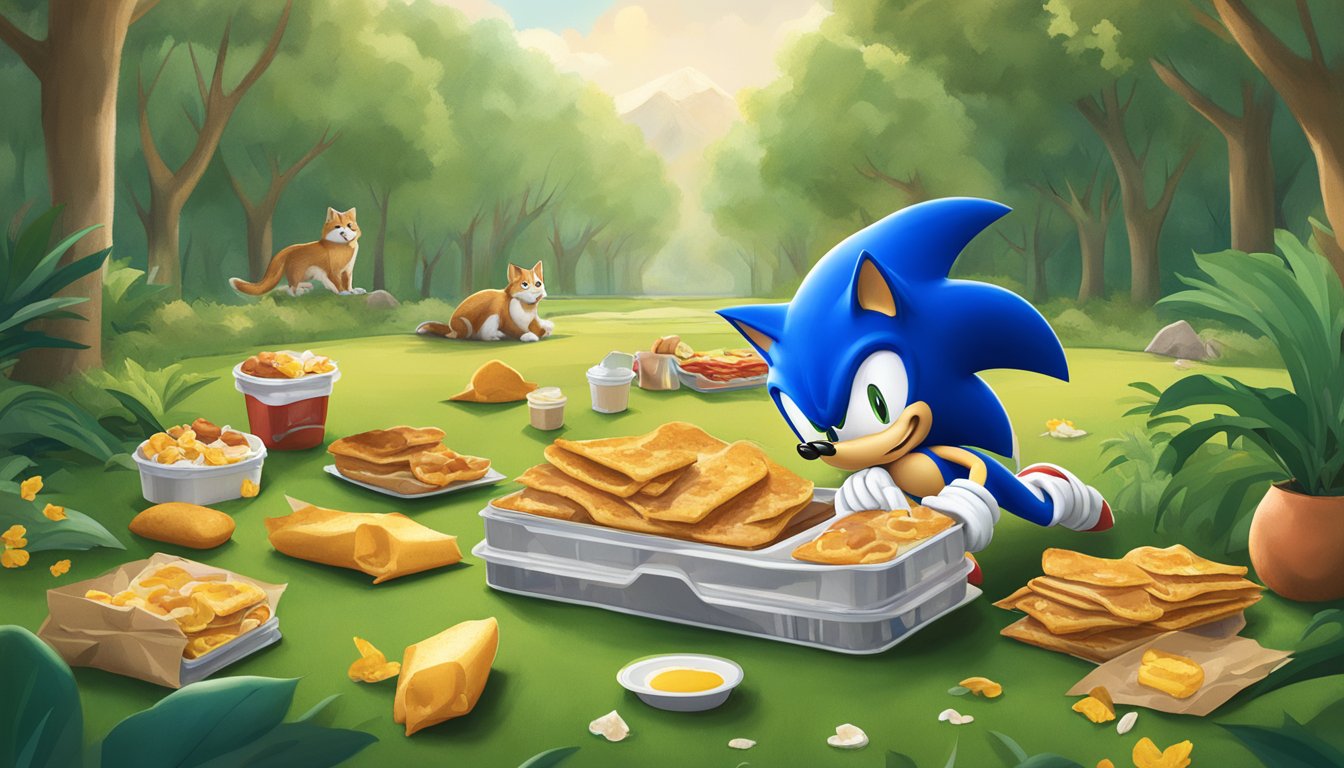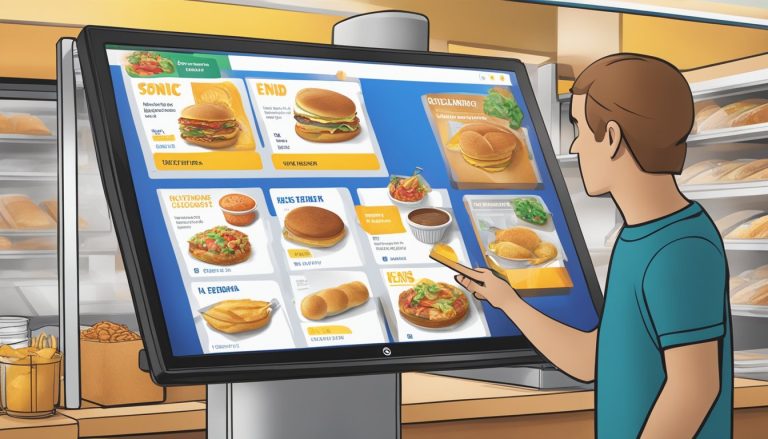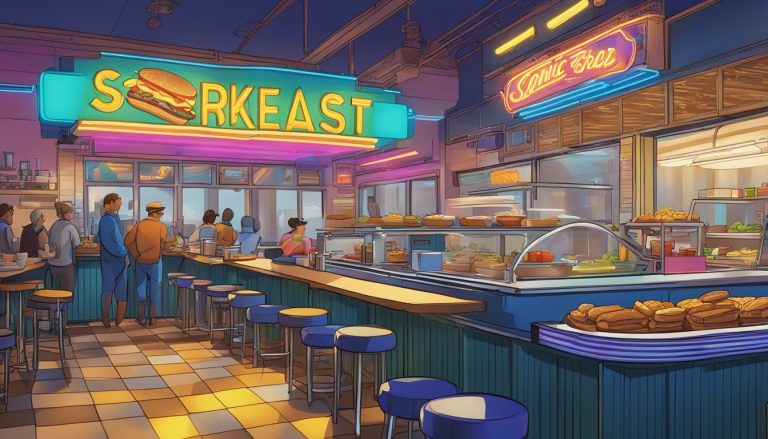Sonic Drive-In’s breakfast packaging has a significant environmental impact due to its widespread use of disposable materials. As a popular fast-food chain serving millions of customers daily, the company’s packaging choices play a crucial role in shaping its ecological footprint. The polystyrene foam containers commonly used for Sonic’s breakfast items contribute to plastic pollution and pose challenges for recycling and waste management.
The environmental consequences of Sonic’s breakfast packaging extend beyond immediate waste generation. These single-use containers often end up in landfills or as litter, potentially harming wildlife and ecosystems. The production process of these packaging materials also consumes energy and resources, further adding to their overall environmental impact.
While Sonic has not publicly announced major sustainability initiatives regarding its breakfast packaging, the fast-food industry as a whole is facing increasing pressure to adopt more eco-friendly practices. Transitioning to recyclable or compostable materials could significantly reduce the environmental impact of Sonic’s breakfast offerings and set a positive example for other companies in the sector.
Overview of Sonic’s Breakfast Packaging

Sonic Drive-In offers a variety of breakfast items served in packaging designed for convenience and portability. The materials and design of their packaging play a crucial role in preserving food quality and safety while considering environmental impacts.
Materials and Design
Sonic’s breakfast packaging primarily consists of paper-based materials for wraps and bags. Sandwiches and burritos are typically wrapped in paper or foil to maintain warmth and freshness. Plastic containers are used for items like French Toast Sticks and hash browns.
The company has made efforts to reduce its environmental footprint by using recyclable materials where possible. However, some packaging still includes non-recyclable elements due to food safety requirements.
Sonic’s packaging design focuses on functionality, ensuring that food stays hot and intact during transport. The wraps and containers are often branded with the Sonic logo and menu item names for easy identification.
Sonic’s Breakfast Menu Items
Sonic’s breakfast menu features a range of items served in various packaging types. Breakfast burritos, a popular choice, are wrapped in foil to retain heat and prevent leaks.
Breakfast sandwiches, including the Breakfast Toaster and SuperSONIC Breakfast Burrito, are typically served in paper wraps or boxes. These packaging options balance portability with minimal waste.
Side items like hash browns and tater tots come in small paper bags or cardboard containers. Drinks, such as coffee and orange juice, are served in disposable cups with lids.
Sonic also offers breakfast combos, which may include multiple packaging types to accommodate different food items in a single order.
Environmental Impact Assessment

Environmental impact assessments reveal key insights about Sonic’s breakfast packaging. These evaluations examine resource usage, waste generation, and greenhouse gas emissions associated with packaging materials and processes.
Resource Consumption
Sonic’s breakfast packaging relies primarily on paper-based materials and plastics. Paper products require wood pulp, water, and energy for production. Plastic components utilize petroleum-based resources. The extraction and processing of these raw materials contribute to deforestation, water consumption, and fossil fuel depletion.
Packaging made from recycled content helps reduce virgin resource demand. However, recycled materials often require additional processing and energy inputs. Sonic could explore more sustainable alternatives like plant-based plastics or biodegradable packaging to lessen resource impacts.
Waste Generation and Management
Single-use breakfast packaging creates substantial waste. Paper wrappers, plastic lids, and foam containers often end up in landfills after a single use. Many of these materials persist in the environment for years.
Proper sorting and recycling can divert some packaging from landfills. However, contamination from food residue often renders recycling ineffective. Composting may be viable for certain paper-based items, but most plastic packaging is not compostable.
Sonic could reduce waste through reusable container programs or by redesigning packaging to be more recyclable or biodegradable. Educating customers on proper disposal methods is also crucial.
Greenhouse Gas Emissions
The production, transportation, and disposal of breakfast packaging contribute to greenhouse gas emissions. Manufacturing processes, especially for plastics, release carbon dioxide and other gases. Shipping packaging materials to restaurants adds to the carbon footprint.
When packaging ends up in landfills, it can generate methane as it decomposes. Incineration of waste packaging also produces emissions. Using recycled content or plant-based materials can help reduce the overall carbon impact.
Sonic could minimize emissions by optimizing packaging designs, sourcing materials locally, and improving end-of-life management. Conducting life cycle assessments would provide valuable data on emissions hotspots.
Sonic’s Sustainability Initiatives

Sonic Drive-In has implemented several measures to address environmental concerns related to its operations. These efforts focus on reducing waste, promoting corporate responsibility, and engaging in partnerships to enhance sustainability practices.
Reduction Strategies
Sonic has taken steps to minimize its environmental footprint through packaging improvements. The company has explored alternatives to polystyrene foam containers, which are difficult to recycle and harmful to the environment. Sonic now uses recyclable paper bags for many menu items.
The drive-in chain has also installed energy-efficient lighting and equipment in its restaurants. This includes LED lights and modern kitchen appliances that consume less electricity. Some locations have implemented water-saving fixtures to reduce water usage.
Sonic encourages customers to use reusable cups for drinks, offering discounts as an incentive. This initiative aims to decrease single-use plastic waste generated by beverage sales.
Corporate Responsibility Policies
Sonic’s corporate responsibility framework includes environmental stewardship as a key component. The company has set goals to reduce energy consumption and greenhouse gas emissions across its operations.
Waste management policies have been established at Sonic restaurants. These include proper sorting of recyclable materials and responsible disposal of food waste. Some locations partner with local composting facilities to divert organic waste from landfills.
Sonic has also focused on sourcing ingredients more sustainably. This involves working with suppliers who follow environmentally friendly farming practices and reducing the carbon footprint of its supply chain.
Partnerships and Certifications
Sonic collaborates with environmental organizations to enhance its sustainability efforts. These partnerships provide expertise and resources to implement eco-friendly practices in restaurant operations.
The company participates in industry sustainability programs. While specific certifications are not mentioned for Sonic, similar businesses often pursue recognition from organizations like the Green Restaurant Association.
Sonic engages in community initiatives related to environmental conservation. This includes supporting local clean-up events and educational programs about recycling and waste reduction. These efforts aim to extend the company’s environmental impact beyond its immediate operations.
Packaging and Customer Experience

Sonic’s breakfast packaging plays a crucial role in shaping customer perceptions and satisfaction. The design and functionality of the packaging directly impact the overall dining experience, from the moment customers receive their food to the final bite.
Customer Convenience Focus
Sonic prioritizes convenience in its breakfast packaging design. The containers are sturdy and leak-resistant, ensuring that food stays intact during transport. Easy-to-open lids allow customers to access their meals quickly, whether dining in their cars or taking food to-go.
Compartmentalized packaging keeps different breakfast items separate, maintaining food quality and temperature. This design prevents soggy ingredients and preserves textures, enhancing the overall taste experience.
Heat-retaining materials are used for hot items like breakfast burritos and sandwiches. Cold items such as fruit cups or yogurt parfaits are packaged in insulated containers to maintain freshness.
Alignment with Brand Values
Sonic’s breakfast packaging reflects the company’s commitment to quality and customer satisfaction. The packaging design incorporates the brand’s signature colors and logo, reinforcing brand recognition and loyalty.
The company has made efforts to use more sustainable materials in its packaging, aligning with growing consumer environmental concerns. This shift includes incorporating recycled content and exploring biodegradable options for certain items.
Packaging also features clear labeling of nutritional information and ingredients, catering to health-conscious customers. This transparency builds trust and helps customers make informed choices about their breakfast selections.
Feedback and Adjustments
Sonic actively seeks customer feedback on its breakfast packaging. The company conducts regular surveys and monitors social media to gauge customer satisfaction and identify areas for improvement.
Based on customer input, Sonic has made several adjustments to its packaging. These include redesigning certain containers for easier handling while driving and improving the stackability of items for customers ordering multiple meals.
The company also responds to specific regional needs, such as using extra insulation in colder climates to keep food warm longer. This adaptive approach ensures that packaging meets diverse customer expectations across different locations.
Recycling and Waste Reduction

Sonic’s breakfast packaging initiatives focus on recyclable materials, customer engagement, and reducing single-use items. These efforts aim to minimize environmental impact and promote sustainability throughout their operations.
Recyclable Materials
Sonic uses recyclable materials in much of its breakfast packaging. Paper bags, cardboard boxes, and plastic containers are made from recycled content where possible. The company has switched to recyclable plastic lids and straws for drinks. Napkins and cup sleeves come from sustainably sourced paper products.
Sonic works with suppliers to increase the percentage of post-consumer recycled content in packaging. This reduces reliance on virgin materials. The company also explores biodegradable alternatives for certain items.
Customer Recycling Initiatives
Sonic encourages customers to recycle packaging through clearly marked recycling bins at restaurants. Educational signage explains which items can be recycled. Some locations offer incentives like discounts for customers who bring reusable cups or containers.
The company partners with local recycling facilities to ensure proper processing of materials. Sonic’s website provides recycling guidelines for takeout orders. Social media campaigns raise awareness about recycling breakfast packaging.
Reducing Single-Use Items
Sonic aims to reduce single-use packaging where feasible. Condiment pumps replace individual packets at many locations. Reusable trays are used for dine-in orders instead of disposable ones.
The company tests washable, reusable containers for certain menu items. Customers can opt out of receiving utensils or straws with their orders. Sonic explores innovative packaging designs that use less material overall.
Staff training emphasizes proper portioning to avoid excess packaging waste. The company regularly reviews its packaging to identify further reduction opportunities.
Future Challenges and Opportunities

Sonic’s breakfast packaging faces evolving environmental concerns. Innovative solutions, regulatory changes, and shifting consumer preferences will shape the company’s approach to sustainable packaging in the coming years.
Innovative Packaging Solutions
Sonic can explore biodegradable materials for its breakfast containers. Plant-based plastics derived from cornstarch or sugarcane offer promising alternatives to traditional petroleum-based plastics. These materials break down more quickly in landfills and produce fewer greenhouse gas emissions during production.
Reusable packaging systems present another avenue for Sonic to reduce waste. Durable containers that customers return for cleaning and reuse could significantly cut single-use packaging. This approach may require investment in collection infrastructure and consumer education programs.
Smart packaging technologies can enhance sustainability efforts. QR codes or RFID tags on breakfast packages could provide customers with recycling information and track packaging life cycles. This data would help Sonic optimize its packaging strategies and demonstrate corporate responsibility.
Legislative Influence
Upcoming regulations will likely impact Sonic’s packaging choices. Many jurisdictions are considering or implementing bans on certain single-use plastics. Sonic may need to phase out items like plastic straws or utensils in favor of compostable alternatives.
Extended Producer Responsibility (EPR) laws could require Sonic to manage the entire lifecycle of its packaging. This might involve setting up collection points for used containers or contributing to recycling infrastructure funding.
Carbon pricing initiatives may affect packaging costs. As governments implement taxes or cap-and-trade systems to reduce emissions, Sonic might face higher prices for carbon-intensive packaging materials. This could incentivize a shift to lower-carbon alternatives.
Consumer Behavior Trends
Growing environmental awareness is influencing customer preferences. Many consumers now actively seek out brands that use eco-friendly packaging. Sonic can capitalize on this trend by clearly communicating its sustainability efforts on packaging and in marketing materials.
The rise of social media activism presents both challenges and opportunities. Customers are quick to call out perceived environmental shortcomings online. However, this also provides a platform for Sonic to showcase its sustainable packaging innovations and engage with environmentally conscious consumers.
Convenience remains a key factor in fast food packaging. Sonic must balance sustainability with practicality to maintain customer satisfaction. Eco-friendly options that preserve food quality and ease of use will be crucial for widespread adoption.




